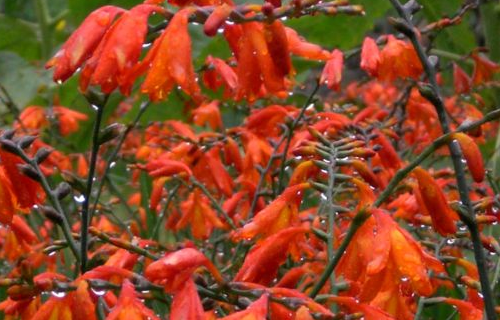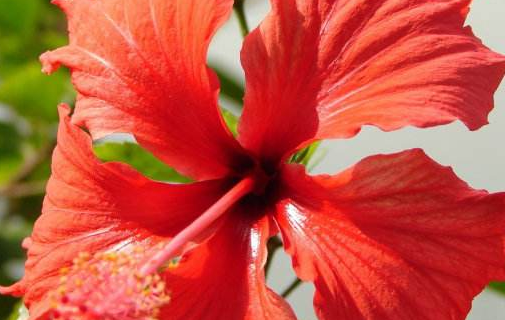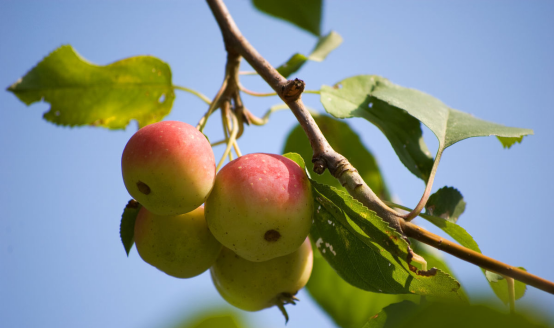How to raise Martian flowers
Light
Martian flowers like the sun very much, so pay attention to give enough sunlight during the plant growth stage, but when the sun is strong, you should pay attention to shading the plant and burn the leaves of the plant.
Temperature
The Martian flower has a very remarkable feature, that is, it is very cold-resistant. Therefore, the bulb open field in the middle and lower reaches of the Yangtze River can survive the winter safely. But pay attention to the winter in the north, it is best to move the plant indoors for maintenance, and put the plant in a place that can receive light.

Soil
The plant still has certain requirements for the soil, it prefers loose, breathable, fertile and well-drained sandy loam, paying special attention to giving sufficient water to the soil during the growth period of the plant to keep the soil in a moist state.
Moisture content
In the plant growth period to ensure sufficient water, so that the soil to maintain a moist state, especially in the spark flower growth period, we must let the soil have sufficient moisture, so that the plant can grow healthily.
The above is about how to raise Martian flowers. Let's take a look at what else we need to pay attention to.
Crocosmia crocosmiflora N. E. Br. Picture of Crocosmia crocosmiflora N flowers: how to raise Martian flowers / how to reproduce Martian flowers business card Martian flowers. E. Br. Introduction of Martian flower culture methods and precautions Martian flower is native to southern Africa, alias realgar orchid, is a hybrid of Pasteuria mars flower and yellow mars flower. Like plenty of sunshine, cold resistance. Bulbs can survive the winter in the open field in the middle and lower reaches of the Yangtze River. It is suitable to grow in well-drained, loose and fertile sandy soil, and the growth period requires sufficient soil moisture. Born in a shady and wet place on a hillside. The flowers bloom continuously in midsummer, which is a good material for arranging flower borders, flower beds and making cut flowers. The morphological characteristics of Martian flowers are perennial herbs with bulbs and stolons, which are oblate and shaped like water chestnuts with brown fibrous membranes. Aboveground stems about 50 inches tall, often branched. The leaves are linear and sword-shaped, with leaf sheaths clasping stems at the base. Flowers numerous, arranged into a compound panicle, extracted from the green leaves, high and low scattered, dense. Flower funnel-shaped, orange-red, horticultural varieties have red, orange, yellow tricolor; perianth tube thin and slightly curved, lobes spreading. Capsule with several seeds in it. The ecological habits of spark flowers like plenty of sunshine and cold resistance. Bulbs can survive the winter in the open field in the middle and lower reaches of the Yangtze River. It is suitable to grow in well-drained, loose and fertile sandy soil, and the growth period requires sufficient soil moisture. The cultivation technique of Martian flower due to the elongation and growth of stolon, the trailing ability of the plant is strong. Before planting, the soil should be fully ploughed, applied sufficient basic fertilizer and formed into high beds. The planting depth is 3-5 cm. Generally, bulbs bloom from June to August of that year, and small bulbs can only blossom the following year. During the growing period, we should pay attention to watering and keep the soil moist. After germination in the middle of March, topdressing was applied once at the bud stage and after flower fade respectively to make the leaves flourish and form a full and renewed corm. The way of propagation of Martian flowers the bulb has a strong ability of natural reproduction and is commonly used in bulb reproduction. Generally divide the ball once every 3 years, dig up the bulb before the new bud germinates in spring, divide the ball and plant. The natural reproduction ability of Martian bulb is strong, and it is commonly used in bulb reproduction. Generally divide the ball once every 3 years, dig up the bulb before the new bud germinates in spring, divide the ball and plant. Due to the elongation and growth of the stolon, the trailing force of the plant is strong. Before planting, the soil should be fully ploughed, applied sufficient basic fertilizer and formed into high beds. The planting depth is 3mi 5cm. Bulbs. Generally, bulbs bloom from June to August of that year, and small bulbs can only blossom the following year. The diseases of Martian flowers are mainly caused by spot disease and root mite. Spot disease was sprayed with 75% chlorothalonil wettable powder 700x, and acaroid mites were sprayed with 1000 times triclofenac EC. The distribution area of Martian flowers is native to South Africa. Most of the flowers are potted in the north of China and can be cultivated in the south. Martian flowers are red, orange and yellow, and they are resistant to heat. In midsummer, they bloom continuously. They are good materials for arranging flower borders, flower beds and cut flowers. It is also suitable to be planted in the green island of the street, in front of buildings, on the lawn, by the lake, etc., and can also be used as cut flowers. Picture of Martian Pill: how to raise Martian Pill / how Martian Pill propagates Naked Calyx Ball of Cactaceae Chinese scientific name: Martian pill Latin name: Gymnocalycium calochlorum (Boed.) Ito 1952 Korean Japanese name: Mars Pill Genus: Opuntia: brief introduction: Mars Pill, Family name: Cactaceae, Naked Calyx Gymnocalycium, Latin name: Gymnocalycium calochlorum (Boed.) Ito 1952 . Family name: Cactaceae naked calyx ball genus Gymnocalycium Latin name: Gymnocalycium calochlorum (Boed.) Ito 1952 Chinese name: Mars Maru Korean Japanese name: Mars Maru synonym: Echinocactus calochlorus Boed. 1932Echinocactus prolifer Backeb. 1932Gymnocalycium calochlorum var. Proliferum (Backeb.) Backeb. 1959Gymnocalycium papschii H. Till 2001 habitat: Argentina-Cordoba, rare shape: Martian pill: pink
- Prev

Matters needing attention in the cultivation of Martian flowers
Hardy Martian flowers originated in Africa, the so-called cold tolerance is actually according to the temperature of Africa, friends in northern China must pay attention to ah in winter, it is best to put it indoors. Pay attention to the two periods in which Martian flowers need more water, the growth period and the growth period.
- Next

Production of bonsai of begonia fruit trees
1. Selection of pots: Begonia bonsai is commonly used to make deep rectangular or oval basins, square and round basins can also be used, and cliff type uses deep thousand-barrel basins. Purple sand pottery basin or glazed pottery basin is suitable for texture, because this kind of basin is permeable and breathable. 2. Soil use: loose requirements for soil quality, either slightly acidic soil or neutral soil
Related
- Fuxing push coffee new agricultural production and marketing class: lack of small-scale processing plants
- Jujube rice field leisure farm deep ploughing Yilan for five years to create a space for organic food and play
- Nongyu Farm-A trial of organic papaya for brave women with advanced technology
- Four points for attention in the prevention and control of diseases and insect pests of edible fungi
- How to add nutrient solution to Edible Fungi
- Is there any good way to control edible fungus mites?
- Open Inoculation Technology of Edible Fungi
- Is there any clever way to use fertilizer for edible fungus in winter?
- What agents are used to kill the pathogens of edible fungi in the mushroom shed?
- Rapid drying of Edible Fungi

